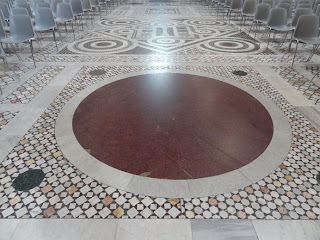Christina, Queen of Sweden, was for sure one of the most interesting people of the 17th Century. Single by choice, she secretly converted to Catholic religion, in a country where the vast majority is Protestant.
When her conversion became public, she was inevitably forced to leave her kingdom, and, with a court made only of a few loyal ones, she moved to Rome in 1655, where she was welcomed with all the honors by the reigning Pope Alexander VII.
When her conversion became public, she was inevitably forced to leave her kingdom, and, with a court made only of a few loyal ones, she moved to Rome in 1655, where she was welcomed with all the honors by the reigning Pope Alexander VII.
A woman of vast culture and multi-faceted interests, she promoted many cultural initiatives in Rome, among which the creation of Rome's bothanical gardens.
Christina was also a woman with a very strong personality, and she showed it in many occasions,which contributed to building the legend around her, just like when she insisted in wanting to use one of Castel Sant'Angelo's cannons to fire a shot.
The heavy stone projectile flew across the river and hit the door of Villa Medici, a beautiful Renaissance palace situated on the Pincio hill, just a few meters away from the Church of the Trinity of the Mountains, which tops the famed Spanish Steps. The building, once bought by the famous Florentine Medici family, hosted the embassy of the Grand Duchy of Tuscany, but was later converted into the French Academy, and is used for events such as exhibits or conferences.
The shot left a round mark on the palace's bronze door, while the cannonball, to remember this event, was used as a decoration for the fountain which is placed exactly in front of the palace's entrance.
So in one of Rome's most scenic corners, the careful observers who wish to see more than the beautiful view over Rome, can see the effects produced by a foreign queen's whim....
Below on the map, the trajectory of the shot which, according to the legend, travelled over 1 mile. (click to enlarge).






























